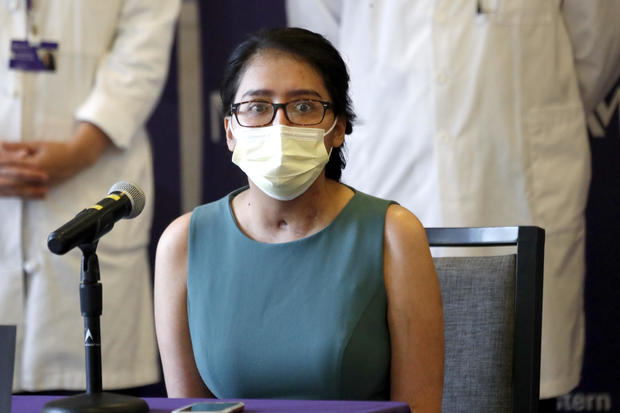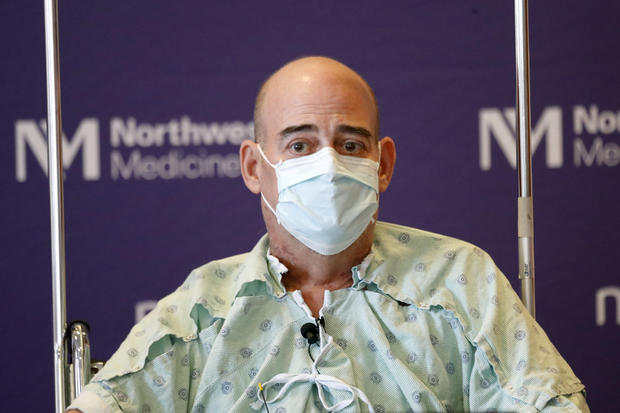 Intermittent Fasting by EpicTop10.com. CC BY 2.0
Intermittent Fasting by EpicTop10.com. CC BY 2.0
Intermittent fasting is currently one of the world’s most popular health trends. Characterised by alternating periods of food absence followed by periods of normal eating, promoters of intermittent fasting claim that it is the ‘metabolic key’ to unlocking weight loss, reducing inflammation, cutting the risk of diabetes and heart disease and maybe even extending your life. Read on to learn what intermittent fasting is, how to do it, and what the evidence says about that extensive list of health claims.
Intermittent fasting may have the appearance that it’s just another short-term diet fad like so many others that have gone before it, but in fact, there is nothing new, novel or faddish about it. The first meal of every day, no matter what time it is eaten, is the ‘breaking of the fast’. So, you’ve been doing intermittent fasting your entire life. Just to be clear though, fasting is different from starvation. Starvation is the involuntary absence of food like what happens during food scarcity and famine. Fasting is the voluntary withholding of food for spiritual, health or other reasons.
Tracing back thousands of years, we have the ancient tradition of religious fasting which is common across all the major world religions. The daily sunrise-to-sunset month of fasting of Ramadan is the most well-known example of this.
So now we have the new trend of intermittent fasting which is the practice of alternating periods of normal eating with extended periods of no food eaten. The cause of this explosion of interest in intermittent fasting can be traced back to a few key defining moments.
The first was the airing of Dr Michael Mosley’s documentary on the BBC in August 2012 called Eat, Fast and Live Longer. That soon spurred a swathe of popular books such as The Fast Diet and the 5:2 Diet. A look at Google Trends shows a clear spike of interest in searches for intermittent fasting at this time and the interest has only grown since then. Throw in celebrity endorsements from Hollywood and Silicon Valley and we’re rapidly approaching peak fasting.
Another explanation for the interest in intermittent fasting is the simplicity of it. Fasting bypasses all the debate about what nutrients and foods that should or should not be eaten and instead purely focusses on the length of time between eating. Fasting proponents are mostly agnostic about what foods are eaten during the ‘feasting’ times. A book about fasting is a short read indeed.
Types of fasting diets
So how do you do a fasting diet? There are several ways – all of which involve splitting the day or week into eating and fasting periods. Intermittent fasting focusses on the time when you don’t eat. Kind of like the saying that it is the silence between the notes that makes the music – that’s very Zen.
Here are some of the most popular fasting schedules:
- The 16:8 plan involves eating only during an eight-hour window followed by a 16-hour fasting period. So, if you have your last meal at 8 pm, you don’t eat again until midday the next day. Rinse and repeat. This method is technically called time-restricted eating (TRE) but falls under the intermittent fasting umbrella. A 14:10 plan is also popular for those starting out with fasting
- Then there is the elegantly simple eat-stop-eat way of doing fasting. Simply fast for a full 24 hours straight for one or two days per week
- Then we have the popular 5:2 diet. This involves choosing two days each week where you eat only 500 to 600 Calories per day but eat normally the other 5 days.
Which is best? Science is nowhere near answering that question. Many people find the 16:8 method to be the most simplest and sustainable method to stick to. If you find it becomes easy to do, then it is possible to move to more advanced fasts like 20:4 (fast for 20 hours, eat for 4 hours). Or even join the ‘one meal per day club’ which makes it a 23:1 fast.
But it doesn’t stop there. Delve into the intermittent fasting subculture on Reddit and you’ll read of all manner of self-experimentation. Here, days of water-only fasts are the norm. And then some go even more hardcore and do ‘dry fasting’ which means no food and no water and often no showers or brushing teeth to avoid any ‘water absorption’. The premise of doing this takes bro science to stratospheric levels.
Then there are the intermittent fasting debates of apart from water, if non-caloric drinks such as tea and coffee (without sugar or water obvs) are okay to have when fasting. There seems little evidence to say that a long black will do any harm in curbing the benefits of a fast so if it helps, then do it.
Intermittent fasting and weight loss
In looking at the evidence for benefits of intermittent fasting, let’s start with the big one first: weight loss. Here is the quick summary: some people lose weight, others don’t, and it doesn’t seem to be any better or worse than any other diet.
Now for the science. The idea of fasting is that when we eat after an extended fast, we don’t fully compensate for the food we’ve gone without. This creates an energy deficit and…..weight loss! Proponents also say that intermittent fasting is easier to maintain, so that will help with adherence.
There have been enough human weight-loss trials comparing intermittent fasting against traditional calorie restriction diets to see how they stack up. And that was the topic of a review paper published in the journal Nutrients in October of 2019.
The review looked at eleven randomised-controlled trials and they all ran for a minimum of 8 weeks and involved adults who were overweight. Intermittent fasting was compared to traditional calorie restriction head-to-head in each study. And what did they find? Nothing to get excited about. Nine out of 11 studies showed no differences between groups in weight or body fat loss.
So, if there is a benefit of intermittent fasting over more traditional diets, it is small and not of much clinical significance. There wasn’t a compelling case either for greater loss of body fat in intermittent fasting versus calorie restriction even though the odd study finds this happens.
What about the sustainability of a fasting diet? The review did not find enough evidence to make a call on this. All diets fare poorly in the long term and I can see little to suggest that intermittent fasting would be much different.
So, in summary, if intermittent fasting works for you and meets your goals and you feel better for it, knock yourself out with whatever fasting protocol works for you. But you won’t be seeing me anytime soon proclaiming it as some next-level diet hack that is going to have you shredded for summer.
Other health benefits
Fasting for weight loss is hardly a new idea because it is just another way to create an energy deficit. But what is novel about the explosion in interest in fasting is the claimed benefits for health and longevity. The body of evidence on intermittent fasting in humans is still relatively small, but several studies have reported improvements in various health markers.
And once you start talking about benefits outside of weight loss, you’ll soon come across a term called ‘autophagy’. ‘Auto’ means self and ‘phagy’ means eat, so autophagy is the body’s way of renewing itself by cleaning out damaged cells – literally by ‘eating itself’.
Autophagy is going on inside you right now. But during fasting, cells activate pathways that increase defences against oxidative and metabolic stress and systems that remove or repair damaged molecules. Think of this like a switch that is activated in periods of food scarcity as the body looks for more fuel sources. In our modern times of food abundance and ‘three meals per day with snacks in-between’, it is rare for this metabolic switch to be flipped. But the benefits of the switch have favourable advantages in improving blood sugar regulation, increasing resistance to stress and decreasing inflammation.
So, is intermittent fasting the key to reducing inflammation, cutting the risk of diabetes and heart disease, improving the brain and neural systems, and maybe even extending life? Much of this is conjecture or based on animal studies at this stage, but a paper published recently in the highly regarded New England Journal of Medicine has put the health claims about intermittent fasting diets under the microscope.
Weight loss aside, there are some initial indications that intermittent fasting may have some additional metabolic advantages. With animal studies and some human research to inform it, there appears a benefit of fasting on supporting cellular health. Cellular health is a broad term and includes things like the resistance of cells to metabolic and oxidative stress, increased DNA repair and activation of antioxidant defence systems.
Other benefits uncovered by the review included some evidence for intermittent fasting decreasing blood pressure, blood lipid levels and even resting heart rates. Clinical trials show that even independent of weight loss, intermittent fasting has an additional advantage for insulin sensitivity and abdominal obesity compared to just a traditional calorie-reduced diet.
In animals and humans, physical function is improved with intermittent fasting. For example, mice maintained on alternate-day fasting have better running endurance than mice that have unlimited access to food. Balance and coordination are also improved in animals on daily time-restricted feeding or alternate-day fasting regimens.
More speculative, but there appears some preliminary research to show that intermittent fasting could benefit brain health too. One study found that mice that were on a brief intermittent fasting diet had better learning and memory than mice with free access to food. Further research in animals suggests that intermittent fasting can suppress inflammation in the brain, which has links to neurological disease. Other animal studies have found that intermittent fasting can reduce the risk of neurological disorders including Alzheimer’s disease, Parkinson’s disease, and stroke.
And for cancer, animal studies suggest that intermittent fasting may help reduce the risk of cancer, but there is nothing yet to say it will help in humans. As a side journey, there is some fascinating work being done looking at how fasting during chemotherapy could improve treatment by promoting cellular regeneration and reducing side effects like nausea and vomiting. It is early days, but it is an exciting area worth keeping an eye on.
As for those claims made about longevity, unless you’re a worm or maybe a lab rat, there isn’t much evidence to show that intermittent fasting will help you live longer. But if it helps with weight loss and reduces the risk of chronic diseases like heart disease and type 2 diabetes, then that is where the benefit could lie.
Is intermittent fasting safe?
And finally, it would be remiss of me not to make the clear disclaimer that intermittent fasting is not for everyone. If you’re underweight or have a history of eating disorders, intermittent fasting is not for you unless under the supervision of a health professional. Intermittent fasting could certainly be a triggering factor for someone vulnerable to an eating disorder.
For anyone taking medications to treat diabetes, then intermittent fasting should not be done without talking to your doctor first. These medications are designed to remove glucose from the blood and without any food, they can do their job too well and put a person at risk of hypoglycaemia. And if you’re pregnant or breastfeeding, it is best to give intermittent fasting a miss.
What it all means for you
So that is your user’s guide to intermittent fasting. It is something that I am asked about a lot for my thoughts on. And my standard response now is that if it connects with you, you find it works, you feel better for it and you can fit it into your daily life then go for it. But there is a long way to go before there is enough evidence to move intermittent fasting into the mainstream as a first-line approach to lose weight or a viable way to treat many health conditions.














 Intermittent Fasting by EpicTop10.com. CC BY 2.0
Intermittent Fasting by EpicTop10.com. CC BY 2.0 Photo by HiveBoxx on Unsplash
Photo by HiveBoxx on Unsplash






